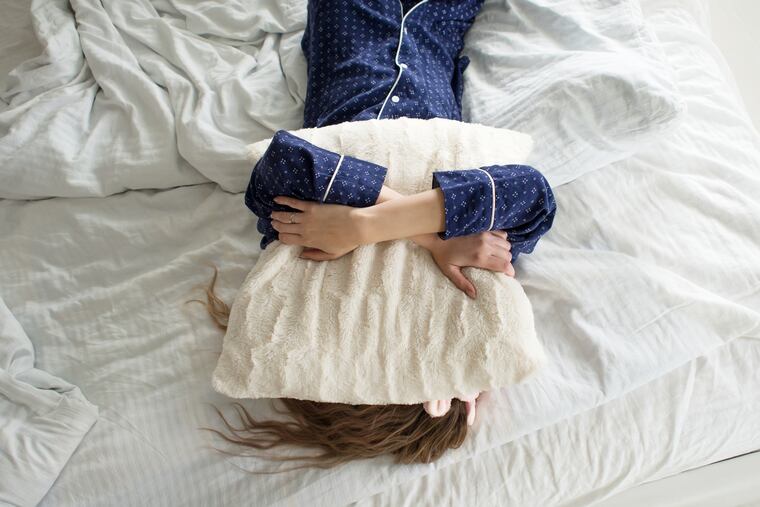COVID-19 has interrupted the American sleep schedule. Is that a good thing? | Expert Opinion
Americans are staying indoors more often because of coronavirus. Waking up and falling asleep at the same times as prior to the pandemic may be notably harder without the same environmental cues. Yet, should we aspire to return to our consolidated sleep schedule?

COVID-19 has disrupted Americans’ lives in ways beyond the infection’s symptoms themselves, including worsening our sleep. As Americans adjust to new work and living situations, and no longer partake in the same routines, many now sleep fewer hours or at more irregular times. Our irregular sleep is aggravated by decreased exposure to sunlight, which regulates the sleep-wake cycle, as we stay indoors much more. Some of us now take classes across time zones, binge-drink caffeine or alcohol, or otherwise practice poor sleep hygiene day-after-day.
Given consistent sleep’s importance for mental, cardiovascular, and endocrine wellbeing, these changes can worsen an already-unhealthy sleep pattern. While many of us once had sleep schedules compatible with a 40-hour work week, the combination of work disruption, social distancing, and staying indoors is changing that. Should we try to restore our slumber to our older habit of nighttime sleep?
Interestingly, our typical sleep schedule is a historical curiosity.
In At Day’s Close: Night in Times Past, historian Roger Ekirch uses literary, medical, and legal texts to explain that biphasic sleep was the norm in the pre-industrial West. People slept in two segments each about four hours long. The two-phased schedules of pre-industrial Westerners were hardly disrupted by the faint, perishable, and expensive lighting permitted by firewood and wax. The twice-daily sleep pattern was thus primarily directed by sunlight which, according to sleep researcher Russel J. Reiter, could be “a thousand times brighter” than light experienced indoors. In turn, the indoors largely meant darkness — which aids the brain’s release of the sleep-promoting hormone melatonin — and darkness allowed consistent rest.
In the late 1800s, accessible electrical lighting transformed life indoors. Americans could return home, keep their bright lightbulbs on, and work or pursue hobbies into the night. Psychological habits formed as bedrooms at night became associated with consistent abundances of brightness, and with nocturnal productivity. What had been the first of two traditional sleep phases each night was gradually pushed forward, creating an increasing semblance of the continuous, eight-hour sleep block we recognize today. Twentieth-century advances in light-emitting technologies — televisions, computers, mobile phones — helped crystallize this lifelong, luminescent disruption of humans’ evolved sleep rhythms.
Alteration of sleep schedules turned into efforts to medicalize and standardize sleep by the 1980s and 1990s. As explained by scholar Matthew Wolf-Meyer, American industrial capitalism favored the eight-hour night of sleep: it was efficient for being undivided, and theoretically long enough to optimize workers’ productivity. Sleep medicine expanded as a new field, offering diagnoses like sleep maintenance insomnia. The pharmaceutical industry marketed treatments including melatonin, and manufacturers developed therapeutic technologies like continuous positive airway pressure (CPAP) that kept airways open to support consolidated sleep. Public interest in a sufficient, continuous eight hours of sleep rose, as magazine and newspaper articles targeting pathologic sleep surged in popularity in the mid-1990s. One needs only to look at the continuous eight-hour sleep schedule’s persistence, melatonin’s ongoing commercial success, or the millions of annual prescriptions of well-marketed sedatives like Ambien to recognize American sleep’s continued intertwining with cultural, economic, and other historical factors.
The consolidated American sleep schedule that COVID-19 has disrupted is not timeless and biologically innate, but rather was developed within a recent sliver of history. This does not preclude COVID-19’s monumental significance for sleep. It is clear that Americans are staying indoors more often. Waking up and falling asleep at the same times as prior to the pandemic may be notably harder without the same environmental cues and with much greater stressors than previously. Yet, should we necessarily aspire to return to the consolidated schedule that we have always known?
Following the end of the pandemic’s worst phases, it seems unlikely that the eight-hour, single-phase way of sleep will change dramatically anytime soon. However, within careful limits adhering to social distancing, many of us can further naturally synchronize our sleep with sunlight. We can find ways to exercise outside without being within six feet of others. We can work next to our sunlit windows, or right outside our homes, if possible. Furthermore, we can at least aim to gradually use our electronics less at night. Basking in sunlight all day and removing the influence of all artificial lights on our sleep is not feasible, especially with COVID-19, but we can try to reimagine from historical perspectives what our sleep schedules could eventually look like.
Richard Zhang is a dual MD and master’s student completing his medical studies at Sidney Kimmel Medical College at Thomas Jefferson University, and his MA in history of science and medicine at Yale University.